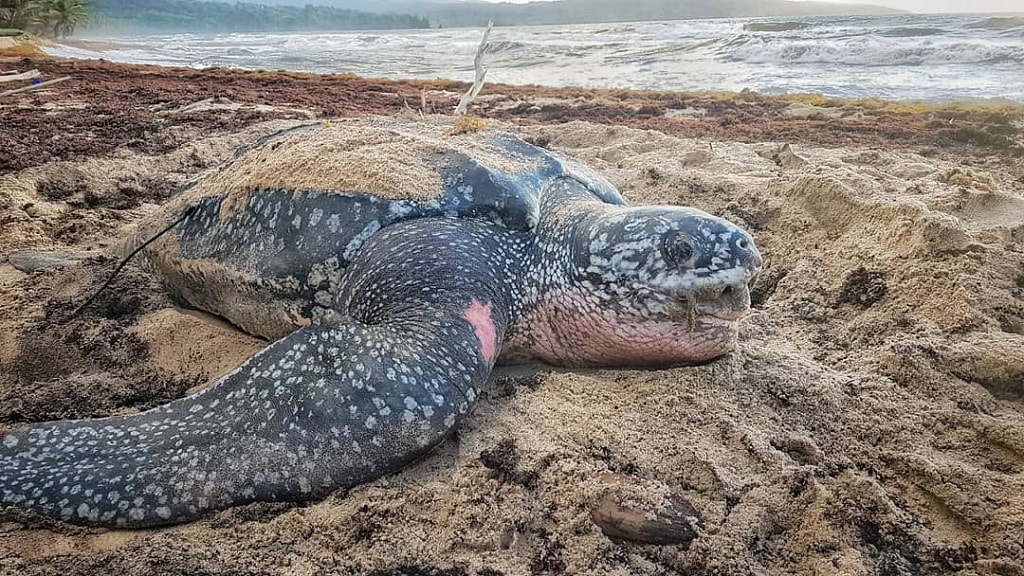|
rinidad and Tobago once again becomes centre stage for one of the world’s oldest creatures, the Leatherback turtle, as they return to our shores to nest. Turtle conservation group Nature Seekers recently shared photos of a female Leatherback turtle which came ashore to Matura Beach to lay her eggs. T&T is known as one of the largest leatherback nesting sites in the world, and the country’s conservation efforts for the endangered creature has been shown on international news agencies such as National Geographic and Blue Planet. Turtle watching season begins in Trinidad and Tobago from March 1 to August 30 and a permit is required for viewing these endangered animals, which were designated as Environmentally Sensitive Species (ESS) and are protected by law. Sightseers are warned that the turtle nesting sites on Matura and Fishing Pond beaches, and part of the Grande Riviere beach, are prohibited areas during turtle nesting season (March 1-August 30) under the Forests Act. It is also illegal to disturb turtle nesting grounds or affect the environment in any way which would harm turtle habitats. The Leatherback turtle, Loggerhead turtle, Hawksbill turtle and Olive Ridley turtle are all designated as Environmentally Sensitive Species. To see Leatherback turtles, one can apply for a permit via the Forestry Division or contact turtle conservation group Nature Seekers. Leatherback turtle numbers dropping due to bycatch Regulations under the Fisheries Act mandate that each commercial shrimp trawling vessel should have a Turtle Excluder Device as well as the specifications for the device, to ensure that turtles can escape if caught in nets. However Nature Seekers chairman Kyle Mitchell said in a 2018 interview with Loop News that the number of turtles nesting on Trinidad and Tobago’s shores was dropping, and the probable cause was bycatch. Turtles often get caught in fishing nets while coming ashore to nest, getting trapped below the water where they suffocate and die. TEDs are to be installed to allow turtles to escape the nets, if caught. Poachers caught with Leatherback turtles or anyone ill-treating a Leatherback turtle faces two years jail time and a fine of up to $100,000, under the Conservation of Wildlife Act About Leatherback turtles
Leatherbacks are the largest of all living turtles and have been in existence for approximately 100 million years. They can weigh up to 2000lbs and 10feet in length, but more commonly average 5-7 feet and 1000 lbs. They are found in all the world’s oceans. Leatherbacks come from as far as Africa, Canada and the UK to nest on local beaches. The most important nesting sites in Trinidad are Matura Bay, Fishing Pond, and Grande Riviere and Turtle Beach in Tobago. Their greatest threat worldwide is the commercial fishing industry, especially the practices of long lining and drift netting.
0 Comments
Leave a Reply. |
T&T news blogThe intent of this blog is to bring some news from home and other fun items. If you enjoy what you read, please leave us a comment.. Archives
April 2025
Categories
All
|


 RSS Feed
RSS Feed